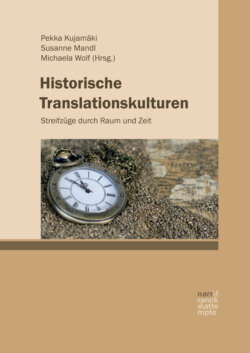Читать книгу Historische Translationskulturen - Группа авторов - Страница 31
2.1.2 Scottish Gaelic
ОглавлениеUntil the eighteenth century Scottish Gaelic, Scots Gaelic or simply Gaelic, was widely spoken in the Scottish Highlands and the Hebrides, while Scots was more commonly spoken in the Lowlands of Scotland, the northernmost tip of the Highlands, the Orkney Islands and parts of the northeast of Ireland. For 290,000 Scots (23 %), Scottish Gaelic was their first and only tongue (MacAulay 2008: 141), but in the aftermath of the Jacobite rebellion of 1745/46, many elements of Highland culture were banned, and the use of the Gaelic language was discouraged. From the middle of the eighteenth century to approximately 1860, Scottish Highlanders were evicted from their lands in the Highland Clearances (Richards 2008) to make way for sheep, for example, which offered a more profitable way of using the land. Apart from emigration from the Highlands caused by government policy, social and economic change during the period led to many Highlanders emigrating and/or becoming more reliant on English (Devine 2002). Parts of Scotland, primarily the area around Glasgow, became more industrialised and started to experience growth, causing the population of Scotland to triple from 1755 to 1881, though many of those who immigrated to the area spoke English as their first language. The Highlands and, as a result, Highland culture and Scottish Gaelic became less important (Kearney 2014: 151). By 1891, the number of Scottish Gaelic monolinguals had fallen to 43,738, just 1 % of the total population (MacAulay 2008: 141).
